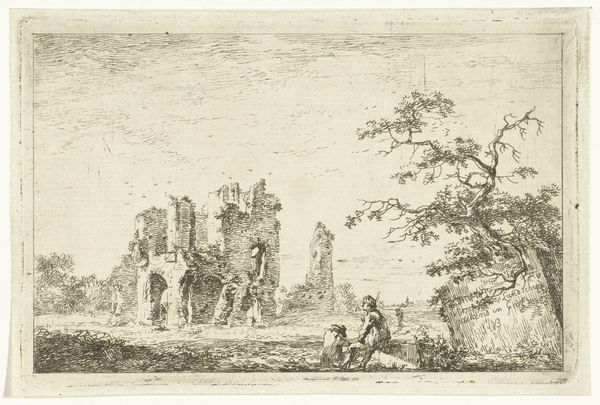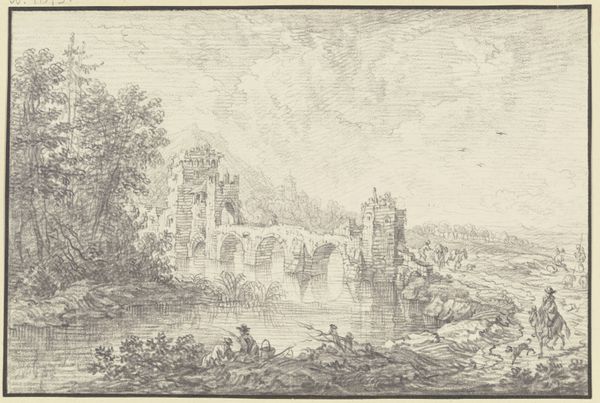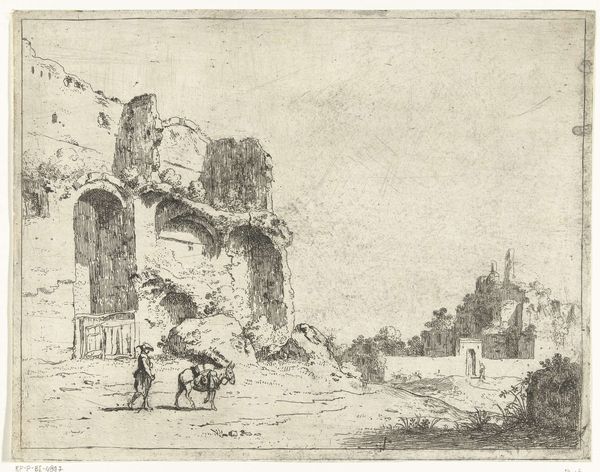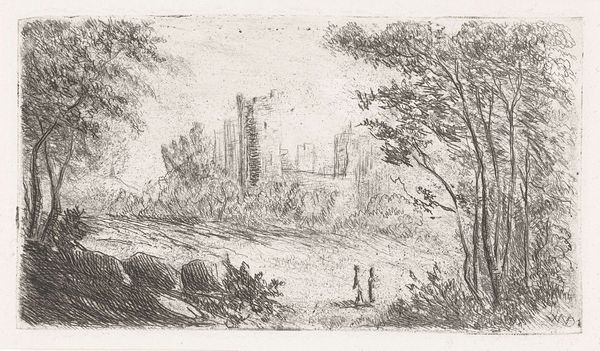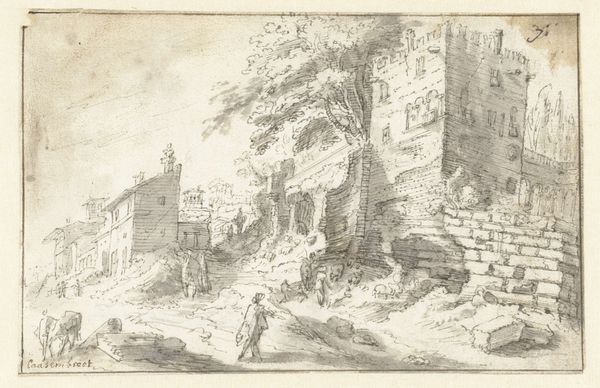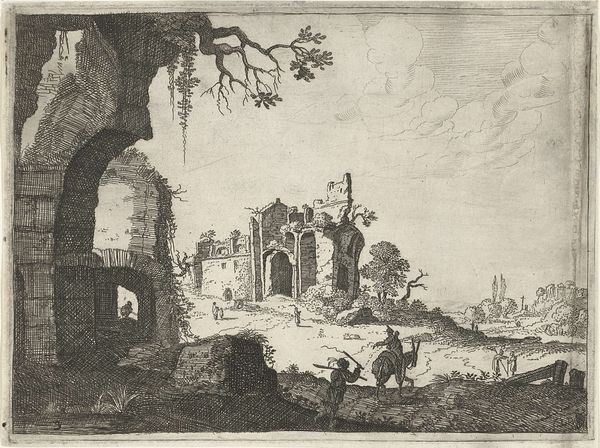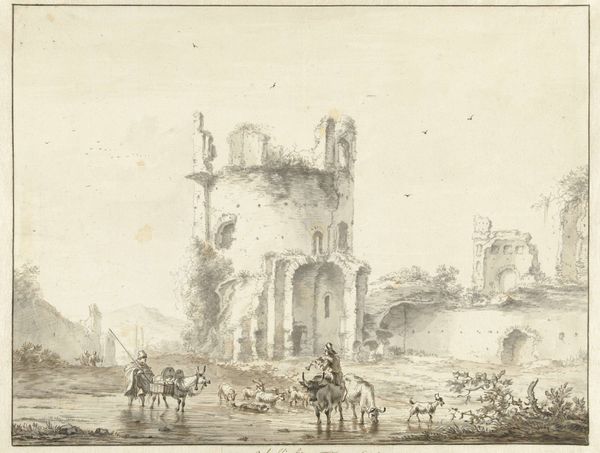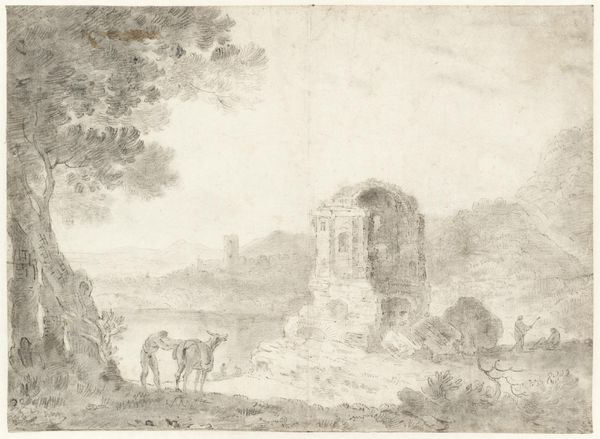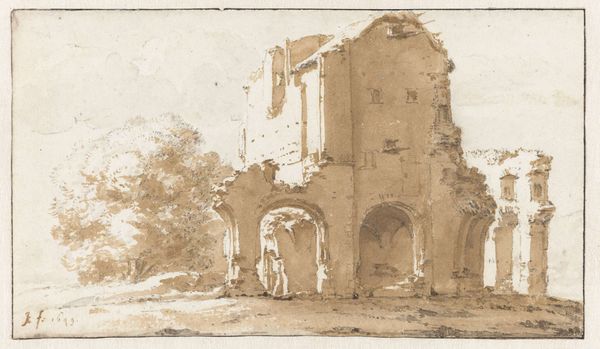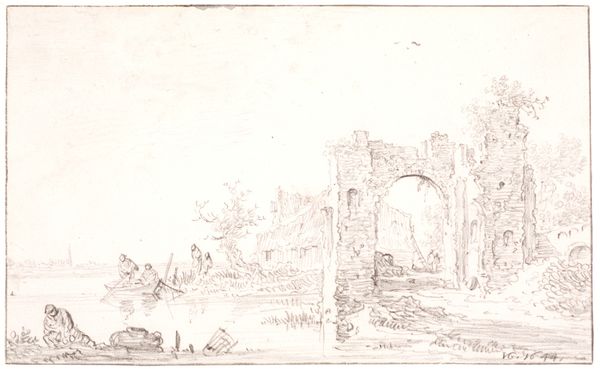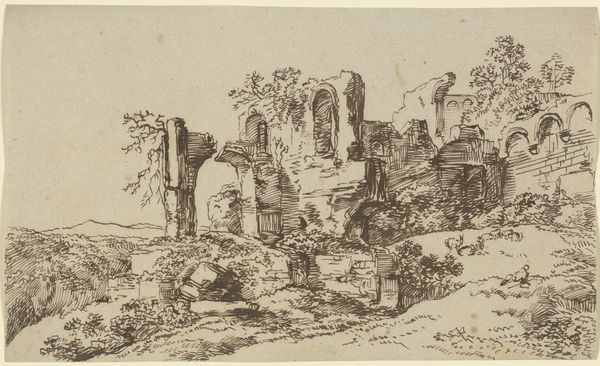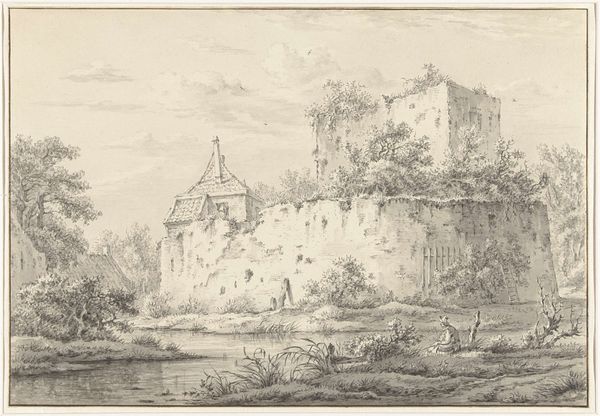
drawing, etching, ink
#
drawing
#
pen sketch
#
etching
#
pencil sketch
#
landscape
#
romanesque
#
ink
#
history-painting
#
watercolor
Dimensions: height 92 mm, width 154 mm
Copyright: Rijks Museum: Open Domain
Editor: So this is Bartholomeus Breenbergh’s "Ruins of the Baths of Caracalla," created between 1638 and 1642, rendered with ink, pen, and etching. I am really struck by the interplay between nature and the crumbling architecture. It's like a stage for the passage of time. What story do you see unfolding in this piece? Curator: I see the deliberate construction of a historical narrative. Breenbergh isn't merely depicting ruins; he's engaging in a dialogue about Rome’s past and present. How are the figures placed in relation to the ruins? Notice that they appear diminutive and almost inconsequential when confronted with these remnants of grandiosity. It reflects the fleeting nature of human power against the enduring presence of history. Editor: That's a great point. The figures almost seem to wander aimlessly through the landscape, oblivious to the grandeur that once existed. It also makes me consider how our perception of history shifts over time. Were these ruins romanticized, do you think? Curator: Absolutely! This wasn't merely documentation; it was an interpretation that catered to the sensibilities of his time. The Romanesque style hints at this romantic vision. Consider, who were Breenbergh’s patrons, and what was their relationship with the depiction of Roman history? Editor: It's interesting to consider how art, even seemingly objective landscapes, reflects a certain political viewpoint. It isn't just about depicting something that's there, but about making a statement about its context and relevance. Curator: Precisely. By highlighting the "history painting" aspects, Breenbergh offers us an insight into how the 17th-century Dutch artists negotiated their own cultural identity in relation to classical antiquity. These ruins are not silent relics, but stages for understanding political views. What did you find most revealing about our conversation? Editor: It shifted my perspective. What I initially saw as an image of the passage of time became a mirror reflecting societal views on history and power. Thank you! Curator: Likewise. Seeing how you connected the image and political context encourages deeper analysis.
Comments
No comments
Be the first to comment and join the conversation on the ultimate creative platform.

